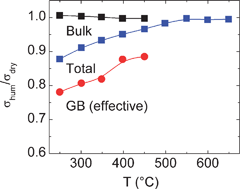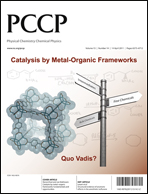The impact of hydration on the transport properties of microcrystalline Sm0.15Ce0.85O1.925 has been examined. Dense, polycrystalline samples were obtained by conventional ceramic processing and the grain boundary regions were found, by high resolution transmission electron microscopy, to be free of impurity phases. Impedance spectroscopy measurements were performed over the temperature range 250 to 650 °C under dry, H2O-saturated, and D2O-saturated synthetic air; and over the temperature range 575 to 650 °C under H2–H2O atmospheres. Under oxidizing conditions humidification by either H2O or D2O caused a substantial increase in the grain boundary resistivity, while leaving the bulk (or grain interior) properties unchanged. This unusual behavior, which was found to be both reversible and reproducible, is interpreted in terms of the space-charge model, which adequately explains all the features of the measured data. It is found that the space-charge potential increases by 5–7 mV under humidification, in turn, exacerbating oxygen vacancy depletion in the space-charge regions and leading to the observed reduction in grain boundary conductivity. It is proposed that the heightened space-charge potential reflects a change in the relative energetics of vacancy creation in the bulk and at the grain boundary interfaces as a result of water uptake into the grain boundary core. Negligible bulk water uptake is detected under both oxidizing and reducing conditions.

You have access to this article
 Please wait while we load your content...
Something went wrong. Try again?
Please wait while we load your content...
Something went wrong. Try again?


 Please wait while we load your content...
Please wait while we load your content...